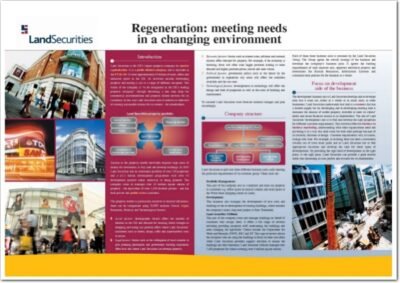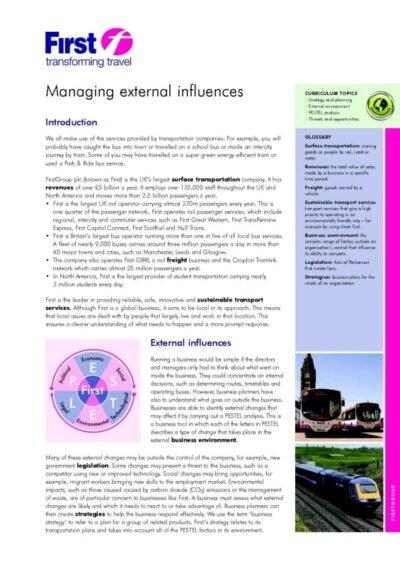A conversion strategy is a systematic approach designed to transform potential customers into actual buyers. This process involves understanding the customer journey, identifying key touchpoints, and implementing tactics that encourage users to take desired actions, such as making a purchase, signing up for a newsletter, or downloading a resource. At its core, a conversion strategy is about aligning marketing efforts with user behaviour to create a seamless experience that guides prospects toward making a decision that benefits both the customer and the business.
To effectively grasp the nuances of conversion strategy, one must delve into the psychology of consumer behaviour. Understanding what motivates individuals to make purchasing decisions is crucial. Factors such as trust, perceived value, urgency, and social proof play significant roles in influencing conversions.
By analysing these elements, businesses can tailor their strategies to resonate with their target audience, ultimately leading to higher conversion rates.
Summary
- Understanding Conversion Strategy:
- A conversion strategy is a plan to turn potential customers into paying customers.
- It involves understanding customer behaviour and creating a seamless journey towards a purchase.
- Importance of Conversion Strategy:
- A well-executed conversion strategy can significantly increase sales and revenue.
- It helps businesses make the most of their marketing efforts and resources.
- Components of a Conversion Strategy:
- Understanding target audience
- Creating compelling content and offers
- Optimising user experience
- Implementing effective call-to-actions
- Utilising data and analytics
- Developing a Successful Conversion Strategy:
- Researching and understanding customer needs and pain points
- Creating a clear and compelling value proposition
- Testing and refining different elements of the strategy
- Implementing a Conversion Strategy:
- Ensuring consistency across all marketing channels
- Utilising technology and tools to streamline the conversion process
- Providing excellent customer support and service
- Measuring the Success of a Conversion Strategy:
- Tracking key metrics such as conversion rate, bounce rate, and average order value
- Using A/B testing to compare different strategies and approaches
- Optimizing and Refining a Conversion Strategy:
- Using customer feedback to make improvements
- Staying updated with industry trends and best practices
- Examples of Successful Conversion Strategies:
- Amazon’s personalised product recommendations
- Spotify’s free trial and seamless subscription process
- Airbnb’s user-friendly booking system
Importance of Conversion Strategy
Enhancing Customer Experience
When customers feel understood and valued throughout their journey, they are more likely to return and recommend the brand to others. Moreover, a conversion strategy allows businesses to maximise their marketing investments. By focusing on converting existing traffic rather than solely driving new visitors to a website, companies can achieve a higher return on investment (ROI).
Maximising Marketing Investments
This approach is particularly vital in digital marketing, where costs can accumulate quickly. By optimising conversion rates, businesses can ensure that their marketing efforts yield tangible results, thereby reinforcing the importance of a strategic focus on conversions.
Driving Tangible Results
By prioritising conversions, businesses can reap the rewards of their marketing efforts, leading to sustained growth and a competitive edge in the market.
Components of a Conversion Strategy
A comprehensive conversion strategy comprises several key components that work in tandem to facilitate the conversion process. Firstly, understanding the target audience is paramount. This involves conducting thorough market research to identify demographics, preferences, and pain points.
By creating detailed buyer personas, businesses can tailor their messaging and offerings to meet the specific needs of their audience. Secondly, the user experience (UX) plays a critical role in conversion rates. A well-designed website or landing page that is intuitive and easy to navigate can significantly impact a user’s decision-making process.
Elements such as page load speed, mobile responsiveness, and clear calls-to-action (CTAs) are essential in creating an environment conducive to conversions. Additionally, A/B testing different layouts and content can provide valuable insights into what resonates best with users. Another vital component is the use of persuasive copywriting.
The language used in marketing materials should evoke emotions and highlight benefits rather than just features. Crafting compelling narratives that connect with the audience on a personal level can enhance engagement and drive conversions. Furthermore, incorporating social proof—such as testimonials, reviews, and case studies—can bolster credibility and encourage potential customers to take action.
Developing a Successful Conversion Strategy
The development of a successful conversion strategy begins with setting clear objectives. These goals should be specific, measurable, achievable, relevant, and time-bound (SMART). For instance, a business might aim to increase its conversion rate by 20% over the next quarter by implementing targeted email campaigns and optimising its website for better user experience.
Establishing such goals provides direction and allows for focused efforts in achieving desired outcomes. Once objectives are established, the next step involves mapping out the customer journey. This entails identifying each stage of the buying process—from awareness to consideration and finally to decision-making.
By understanding how customers interact with the brand at each stage, businesses can create tailored content and experiences that address their needs and concerns. For example, providing informative blog posts during the awareness stage can help educate potential customers about a product or service, while offering limited-time discounts during the decision-making phase can create urgency. Collaboration across departments is also crucial in developing an effective conversion strategy.
Marketing, sales, and customer service teams should work together to ensure consistency in messaging and approach. Regular meetings and brainstorming sessions can foster creativity and innovation while aligning everyone towards common goals.
Implementing a Conversion Strategy
Implementing a conversion strategy requires careful planning and execution. The first step is to ensure that all necessary tools and technologies are in place. This may include customer relationship management (CRM) systems, email marketing platforms, analytics tools, and A/B testing software.
These resources enable businesses to track user behaviour, segment audiences, and analyse data effectively. Once the infrastructure is established, it is essential to create engaging content that aligns with the identified customer journey stages. This content should be distributed across various channels—such as social media, email newsletters, and blogs—to reach potential customers where they are most active.
For instance, using targeted ads on social media platforms can help capture the attention of users who may not be aware of the brand yet. Furthermore, training staff on the importance of conversion strategies can enhance overall effectiveness. Employees should understand how their roles contribute to the larger goal of increasing conversions.
This may involve training sales teams on effective communication techniques or educating customer service representatives on how to handle objections during interactions with potential buyers.
Measuring the Success of a Conversion Strategy
To determine the effectiveness of a conversion strategy, businesses must establish key performance indicators (KPIs) that align with their objectives. Common KPIs include conversion rate, average order value (AOV), customer acquisition cost (CAC), and return on ad spend (ROAS). By regularly monitoring these metrics, companies can gain insights into what is working well and what areas require improvement.
Analytics tools play a pivotal role in measuring success. Platforms like Google Analytics provide valuable data on user behaviour, allowing businesses to track how visitors interact with their website or landing pages. By analysing metrics such as bounce rate, time spent on site, and click-through rates (CTR), organisations can identify potential bottlenecks in the conversion process and make informed decisions about necessary adjustments.
Additionally, qualitative feedback from customers can offer valuable insights into their experiences. Surveys and feedback forms can help gather information about user satisfaction and areas for improvement. Understanding customer sentiment can guide future iterations of the conversion strategy and ensure that it remains aligned with evolving consumer needs.
Optimizing and Refining a Conversion Strategy
Optimisation is an ongoing process that involves continuously refining the conversion strategy based on data-driven insights. A/B testing is one of the most effective methods for optimisation; it allows businesses to compare different versions of web pages or marketing materials to determine which performs better in terms of conversions. For example, testing different headlines or CTA buttons can reveal which variations resonate more with users.
Moreover, staying abreast of industry trends and consumer behaviour changes is essential for maintaining an effective conversion strategy. Regularly reviewing competitor strategies can provide inspiration for new ideas or highlight gaps in one’s own approach. Engaging with customers through social media or forums can also yield insights into emerging preferences or pain points that may not have been previously considered.
Another critical aspect of optimisation is personalisation. Tailoring content and experiences based on user data—such as past purchases or browsing history—can significantly enhance engagement and drive conversions. For instance, recommending products based on previous purchases or sending personalised email campaigns can create a more relevant experience for users.
Examples of Successful Conversion Strategies
Several companies have successfully implemented conversion strategies that serve as exemplary models for others looking to enhance their own efforts. One notable example is Amazon’s use of personalised recommendations based on user behaviour. By analysing past purchases and browsing history, Amazon suggests products that align with individual preferences, significantly increasing the likelihood of additional purchases.
Another compelling case is Dropbox’s referral programme, which incentivises users to invite friends by offering additional storage space for both parties when a referral signs up. This strategy not only drives new user acquisition but also leverages existing customers as advocates for the brand. Airbnb has also excelled in optimising its conversion strategy through user-generated content.
By showcasing reviews and photos from previous guests alongside property listings, Airbnb builds trust with potential customers while providing social proof that encourages bookings. These examples illustrate how diverse approaches can lead to successful conversion strategies tailored to specific business models and target audiences. By learning from these successes and adapting strategies accordingly, businesses can enhance their own conversion efforts and achieve sustainable growth in an ever-evolving marketplace.
A crucial aspect of developing a successful conversion strategy is understanding the importance of remote working in today’s business landscape. Embracing remote working can lead to increased productivity and employee satisfaction, as highlighted in the article “Business Embracing Remote Working”. By implementing a remote working policy, businesses can tap into a wider talent pool and adapt to the changing demands of the modern workforce. This shift towards remote working is just one of the many elements that businesses need to consider when undergoing a successful enterprise DevOps transformation, as discussed in the article “5 Elements of a Successful Enterprise DevOps Transformation”.
FAQs
What is a conversion strategy?
A conversion strategy is a plan or approach designed to turn website visitors or potential customers into actual paying customers. It involves a series of tactics and techniques aimed at persuading and encouraging users to take a desired action, such as making a purchase, signing up for a newsletter, or filling out a contact form.
Why is a conversion strategy important?
A conversion strategy is important because it helps businesses to maximise the value of their website traffic and marketing efforts. By focusing on converting visitors into customers, businesses can increase their revenue and improve their return on investment.
What are some common elements of a conversion strategy?
Common elements of a conversion strategy include clear and compelling calls-to-action, user-friendly website design, persuasive copywriting, effective use of landing pages, A/B testing, and data analysis to track and improve conversion rates.
How can businesses measure the success of their conversion strategy?
Businesses can measure the success of their conversion strategy by tracking key performance indicators (KPIs) such as conversion rate, click-through rate, bounce rate, average order value, and customer lifetime value. These metrics can provide insights into the effectiveness of the conversion strategy and help identify areas for improvement.
What are some tips for creating an effective conversion strategy?
Some tips for creating an effective conversion strategy include understanding the target audience, providing valuable and relevant content, simplifying the conversion process, building trust and credibility, and continuously testing and refining the strategy based on data and feedback.
 Regeneration: meeting needs in a changing environment (PDF)
Regeneration: meeting needs in a changing environment (PDF)  Managing external influences (PDF)
Managing external influences (PDF) 

